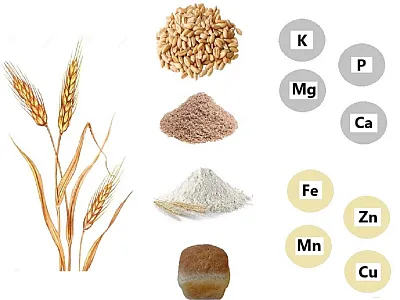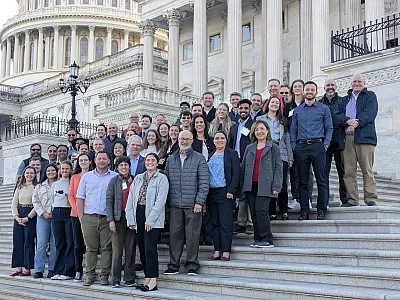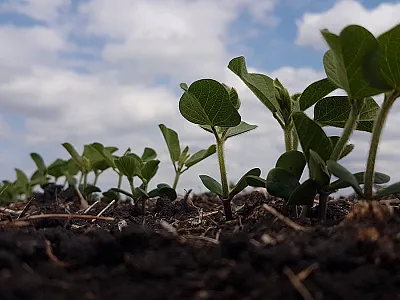Improving cover crop interseeding in northern climates


Extensive research has found that cover cropping can increase the overall health of agricultural systems by scavenging excess nutrients, increasing water infiltration, reducing surface runoff, increasing biodiversity, and building organic matter. Furthermore, cover cropping can help enhance the benefits of other farming practices such as no-till planting, creating synergies that increase farm financial and environmental sustainability. In northern climates, there are significant challenges to establishing cover crops due to the short growing window following corn silage harvest. The authors of this article share their experiences, challenges, and successes of integrating cover crops into northern climates. Earn 0.5 CEUs in Crop Management by reading this article and taking the quiz at https://web.sciencesocieties.org/Learning-Center/Courses.
Extensive research has found that cover cropping can increase the overall health of agricultural systems by scavenging excess nutrients, increasing water infiltration, reducing surface runoff, increasing biodiversity, and building organic matter. Furthermore, cover cropping can help enhance the benefits of other farming practices such as no-till planting, creating synergies that increase farm financial and environmental sustainability. In northern climates, there are significant challenges to establishing cover crops due to the short growing window following corn silage harvest. In this article, we will share our experiences, challenges, and successes of integrating integrating cover crops into northern climates.
Vermont’s agricultural landscape predominantly consists of dairy operations that rely heavily on the production of corn silage. Silage corn varieties typically require 2200–2800 growing degree units (GDUs) to reach maturity. Cover crops like winter rye need an additional 300 GDUs in the fall to establish successfully. In northern climates, the total GDUs accumulated across the entire growing season are typically between 1800 and 2800, depending on location. This leaves very little time to adequately establish cover crops following corn harvest. Furthermore, this region also has high annual rainfall totals, further complicating farmers’ abilities to access fields to plant cover crops in a timely manner.

Due to the short time window post-harvest and the challenging climate, research has focused on interseeding cover crops as a method to overcome these barriers. Interseeding involves the sowing of cover crop seed into the cash crop to achieve early establishment and better long-term results. However, when doing so, Vermont farms have experienced weaker performance compared with fall-planted cover crops. Generally, the interseeded cover crops become shaded quickly by the corn canopy, especially with silage corn that is planted at high densities ranging between 32,000-36,000 plants per acre. Shut off from sunlight and photosynthesis, the summer cover crop growth pauses until the corn is harvested. In addition, herbicides with residual are often applied to corn to control weeds that have yet to emerge, and this alone may be impacting success. Furthermore, special attention likely needs to be paid to field selection and other crop management practices that impact light infiltration. In an effort to improve the success of interseeded cover crops, University of Vermont Extension collaborated with farmers in northern Vermont to modify these key management practices in their corn silage fields.
Methods
On-farm research was conducted with 30 farms across northern Vermont where each farm enrolled up to 50 acres of control and 50 acres of trial fields. The trial fields involved modifying the corn system to enhance the establishment of interseeded cover crops. To maximize light reaching the cover crop, corn varieties with indeterminate ears (flex) and vertical leaf architecture were planted, corn populations were kept at 30,000 plants/ac, and the corn planter was modified to introduce a skip of approximately 2 ft for every 17 ft of planted row. This method has been utilized by some farms in dry climates where water is a limiting factor in corn yields. In addition, cover crops known to be shade tolerant, including annual ryegrass, red clover, and daikon radish, were drill-seeded into corn between the growth stages of V4 and V6. Finally, the herbicide program was modified to prevent chemical residual from damaging the cover crop. Over a two-year period, the efficacy of these practices was monitored by collecting cover crop, weed, and corn data for each field.
Results
After putting all the best practices into place to encourage establishment and growth of an interseeded cover crop, the fall percent surface cover and biomass of cover crops was highly variable.

Percent cover measured as fractional green cover using the Canopeo tool was taken in late October, depending on the farm, and varied between 16.5 and 63.6%. The cover crop biomass median was 1243 lb of dry matter (DM)/ac. However, there was a wide range of growth observed across all the fields ranging from 386 to 5486 lb DM/acre. Normalized difference vegetation index (NDVI) data were also used to determine the percentage of the entire field covered with cover crop. The NDVI data were acquired from the website: https://wp.agromonitoring.com/. The data were collected using Landsat 8 or Sentinel-2 satellite platforms with 10-m resolution. On average, the project trial fields had 5.4% higher NDVI than the project control fields. The NDVI data were gathered as close to four weeks post-harvest on a day with 0% cloud cover. When averaged across all trial fields, the dominant cover crops were annual ryegrass (43%) and radish (39%) with some clover (5%).
Weed cover at time of cover crop establishment likely had little effect on fall cover crop biomass, indicating that weed competition may not have been the sole cause of low cover crop biomass. Overall, there were no differences in percentage of weeds among the project trial and control fields when assessed during the summer.

However, there were a couple of fields that had poor weed control, and both had hay removed for first cut, followed by herbicide application and corn planting. In general, the project indicated that in most cases, the low residual herbicide program did not impact weed control and could be successfully implemented if a farmer wanted to interseed cover crops. This also reinforces that strong consideration should be made to avoid interseeding in fields with problematic weed history or those with heavy sod residue (as was the case in this study).
Corn yield data are difficult to assess because of variability in variety, seeding rate, and management practices. In the control fields, farmers used their standard practices and variety of corn. There was significant variability in those practices. In 2020, across all farms, on average the project control fields produced 2.16 tons/ac more than the trial fields. However, in 2021, across all farms, the difference between project control and trial fields was negligible (0.79 tons/acre).

Generally, there were only a few fields that did not have comparable yields between the control and trial fields, again likely a result of poor weed control based on field conditions.
Conclusions
The goal of this project was to modify practices, corn variety, populations, and herbicide program for improved cover crop establishment without harming yields. In general, these modifications improved cover crop establishment and did not harm yields. Successful interseeding should not compromise corn yields. Hence, cover crop and corn variety selection may need to be tailored to specific soil types and environments to increase cover crop establishment success and crop yields.
Careful consideration still needs to be made when selecting fields appropriate for interseeding. Not every field will be a good candidate for interseeding success. Small-seeded crops need adequate seed-to-soil contact and moisture in the top few inches of the soil. If fields are severely compacted or of poor soil tilth, these small seeds will be more challenged to establish. In addition, fields with a history of difficult-to-control weeds should not be considered for interseeding.
Herbicide management is essential to success. Overall, a low residual herbicide program can adequately control weeds in most corn fields. However, timing of herbicide application to best manage weed pressure is critical. If herbicides are custom-applied, the farmer needs to communicate what fields will have cover crops interseeded, and appropriate low-residual herbicides need to be selected. Additional considerations and adjustments to the herbicide program should be made when interseeding cover crops into corn following sod.
In Vermont, cover crop mixtures helped to provide diversity each season. However, more importantly, some cover crop species were more successful in certain years, soil types, and conditions than others. Having a mixture can help to hedge risk from year to year and field to field.
Lastly, soil moisture had the greatest impact on interseeded cover crop establishment. Given the variability in cover crop establishment and corn crop yields, soil moisture was likely the biggest driving force in whether interseeded cover crops established successfully. Both 2020 and 2021 were drier than normal and likely impacted the germination and establishment of cover crops at some of the sites. The information recorded by the 30 weather stations in this project was highly variable, even on a relatively small geographic scale. Neighboring farms only a few miles apart had significant differences in precipitation before and just following interseeding.
Interseeding is one method of planting cover crops that can be successful with proper management. However, it is a practice that should remain an option in the cover crop toolbox. Adaptive management is key with cover crops, and many years will provide suitable conditions for interseeding, but shifts to postharvest planting should be considered if field conditions are not conducive for the practice.
Self-study CEU quiz
Earn 0.5 CEUs in Crop Management by taking the quiz for the article at https://web.sciencesocieties.org/Learning-Center/Courses. For your convenience, the quiz is printed below. The CEU can be purchased individually, or you can access as part of your Online Classroom Subscription.
- Interseeding cover crops in northern climates like Vermont is desirable because
- it is easier than waiting until after corn harvest.
- a short growing season coupled with high annual precipitation makes cover crop establishment challenging.
- there is limited soil moisture later in the season.
- of the high prevalence of corn grain acres with late harvest timing.
- Generally, interseeding outperforms cover crops planted after corn silage harvest.
- True.
- False.
- Which of these factors did the researchers NOT manipulate in the interseeded trial fields?
- Corn architecture.
- Corn populations.
- Cover crop seeding rate.
- Herbicide materials.
- Which environmental factor likely has the most impact on successful interseeded cover crop establishment?
- Weed pressure.
- Soil moisture at the time of planting.
- Growing degree days during the season.
- Soil type.
- Researchers found that changing practices to favor the interseeded cover crops
- increased corn yields.
- decreased corn yields.
- improved cover crop establishment.
- harmed cover crop establishment.
Text © . The authors. CC BY-NC-ND 4.0. Except where otherwise noted, images are subject to copyright. Any reuse without express permission from the copyright owner is prohibited.










